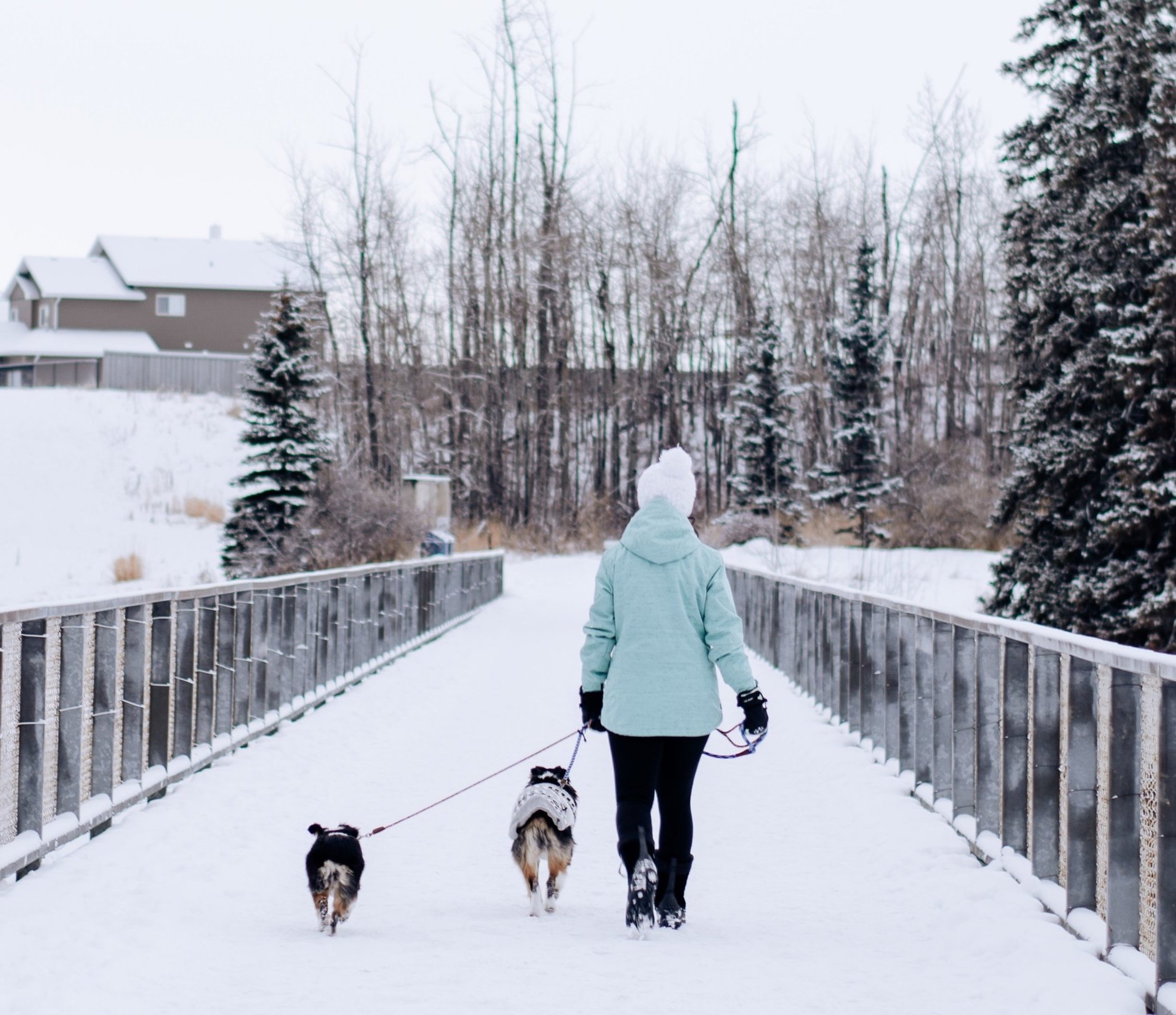Buddy Walks: Benefits + Considerations
It's not always easy to pair dogs together for buddy or group walks. There are so many dogs that do not get along with others, have differing levels of energy, athleticism, and mobility.
However, if a dog can be in close proximity to another dog safely and comfortably, a buddy walk is a great way for them to make a friend.
Benefits of Buddy Walks
Exercise: They are getting exercise which has a multitude of benefits for their health and wellness including relieving stress, reducing anxiety, releasing pent up energy, easing frustration, shifting away from a bad mood, releasing endorphins, and more.
Fresh Air: They are getting fresh air which also helps with their mental, emotional, and physical health.
Socialization: Buddy walks allow them to socialize with another dog for the entire time they are together. Even though dogs don’t really “talk” per se (or at least in the way humans do), they are still communicating the whole time they are around each other through body language and various sounds, sighs, gruffs, barks, etc. they may express.
Making A Friend: Because buddy walks are only 2 dogs at a time it can be much less stressful than a group walk. This is especially true if your dog gets overwhelmed in larger groups with other dogs. Sometimes a dog is much better with another dog 1-on-1. If your dog and another dog walk together frequently they will start to build a friendship. They will look forward to and be excited to see one another, and be able to grow together over time.
Who is a good fit for a buddy walk?
When I am placing dogs together for buddy walks I look at many different factors to make sure everyone involved (both dogs and me, as the walker) will be safe.
Some things I look for:
They should really be on the same page (or close to the same page) with regards to personal space.
Are they ok with closeness/proximity to another dog?
What are their triggers and if they become triggered can they be reactive, aggressive, or violent with the other dog, with me, or anyone we may be close to?
Are they able to have some awareness of the other dog during the walk and what that dog is doing? For example, it's really difficult if one dog is trying to 💩 but another dog is pulling you in the other direction towards something they want to explore.
Are they aware that they are not the only one whose needs are being taken care of during the walk?
Do they have similar energy levels or have a similar walking distance range?
Are they good walkers and can stick to one side or the other? It can be challenging during a 1-on-1 walk if they weave back and forth, in front of and behind me, but on a buddy walk they really can't be doing that because they will tangle up both them, the other dog, and me who is walking them.
…And more.
Proceeding With Caution
I am always very careful before I pair two dogs together, and monitor the behaviour, interaction, and the safety of the situation throughout the whole walk when there are 2 or more dogs together.
The very last thing I want is for someone to get hurt so I take extreme caution when pairing dogs together for buddy walks.
Overall, if two are well matched for each other then buddy walks are a fantastic way for your dog to get exercise, fresh air, to socialize, and make a friend. 🐶💙



